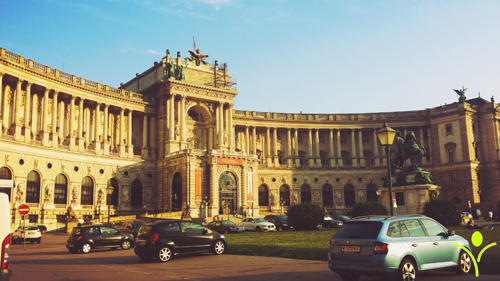The wars between Napoleonic France and the older monarchies transformed the face of Europe. Among other things, they brought about the disintegration of the Holy Roman Empire. In 1806, Franz II declared the latter dissolved, since 1804 he held the title “Emperor of Austria”. As a result, Vienna gained the status of imperial city of Austria, but it lost its importance as a center of German politics.
In 1805, the French army occupied Vienna for two months, while Napoleon resided in the Schönbrunn Palace. In 1809, the Viennese attempted to repeal another French assault, but after only a few hours, the city stood in flames and they were forced to surrender. It was on the battlefield between Aspern and Essling, today in the northeast of Vienna, where Napoleon suffered his first defeat. However, the French army soon reclaimed its military superiority at the Battle of Wagram. Before their withdrawal, Napoleon’s troops destroyed large sections of the city’s fortifications.
In place of the demolished bastions that had stood before the Imperial Palace, builders then erected the “Neues Burgtor” (Imperial Gate), the “Äußerer Burgplatz” (now Heldenplatz) and the “Burggarten” (Imperial Gardens).
After Napoleon’s defeat, the rulers of Europe gathered at the “Congress of Vienna (1814-1815) to establish a new political order in Europe. Vienna became the centre of the European Restoration, which found its spokesman in the Austrian chancellor Matternich.

